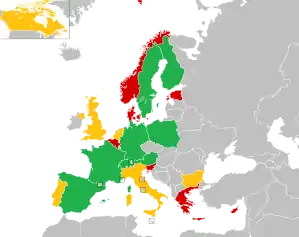| Eurovision Young Dancers 1993 | |
|---|---|
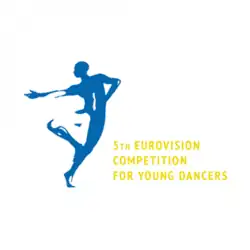 | |
| Dates | |
| Semi-final | 13 June 1993 |
| Final | 15 June 1993 |
| Host | |
| Venue | Dance House, Stockholm, Sweden |
| Presenter(s) | |
| Executive supervisor | Christian Clausen |
| Host broadcaster | Sveriges Television (SVT) |
| Website | youngdancers |
| Participants | |
| Number of entries | 15 |
| Debuting countries | |
| Returning countries | |
| Non-returning countries | |
Participation map
| |
| Vote | |
| Voting system | A professional jury chose the finalists and the top 3 performances |
| Winning dancers | Zenaida Yanowsky |
The Eurovision Young Dancers 1993 was the fifth edition of the Eurovision Young Dancers, held at the Dance House in Stockholm, Sweden on 15 June 1993.[2] Organised by the European Broadcasting Union (EBU) and host broadcaster Sveriges Television (SVT), dancers from eight countries participated in the televised final. A total of fifteen countries took part in the competition. Estonia, Greece, Poland and Slovenia made their début with Austria returning and Bulgaria, Italy, Netherlands, Portugal and Yugoslavia deciding not to participate.[2]
As in 1989 and 1991, a semi-final was held to choose the finalists. The semi-final took place 2 days before the final (13 June 1993). The jury chose the finalists and top 3 performances. The prizes were presented by Princess Christina, the youngest sister of Carl XVI Gustaf, King of Sweden.[2]
The non-qualified countries were Belgium, Cyprus, Finland, Italy, Norway, Portugal and Slovenia. Zenaida Yanowsky of Spain won the contest, with Switzerland and Austria and France placing second and joint third respectively.[3]
Location
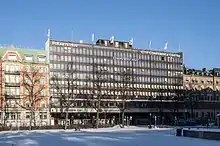
The Dance House in Stockholm, Sweden, was the host venue for the 1993 edition of the Eurovision Young Dancers.[2]
Format
The format consists of dancers who are non-professional and between the ages of 16–21, competing in a performance of dance routines of their choice, which they have prepared in advance of the competition. All of the acts then take part in a choreographed group dance during 'Young Dancers Week'.[4]
Jury members of a professional aspect and representing the elements of ballet, contemporary, and modern dancing styles, score each of the competing individual and group dance routines. The overall winner upon completion of the final dances is chosen by the professional jury members.[4]
As in 1991, the interval featured a documentary about the dancers that did not make it to the final.[2]
Results
Preliminary round
A total of fifteen countries took part in the preliminary round of the 1993 contest, of which eight qualified to the televised grand final. The following countries failed to qualify.[2]
| Country | Participant | Dance | Choreographer |
|---|---|---|---|
| Rafaella Raschella | "The Sleeping Beauty" | M. Petipa | |
| Lia Haraki | "Sunrise - Sunset from Out of Silence" | N. Loizidu | |
| Julie Strandberg and Mads Blangstrup | "The Flower Festival in Genzano" | A. Bournonville | |
| Stanislav Jermakov and Luana Georg | "The Flower Festival in Genzano" | A. Bournonville | |
| Theodora Bourbou | "Esmeralda" | M. Petipa | |
| Kristine Oren | "The Snark" | S. Edvardsen | |
| Ursa Vidmar | "Don Quixote" | M. Fokin |
Final
Awards were given to the top three countries. The table below highlights these using gold, silver, and bronze. The placing results of the remaining participants is unknown and never made public by the European Broadcasting Union.[3]
| Place | Country | Participant | Dance | Choreographer |
|---|---|---|---|---|
| 1 | Zenaida Yanowsky | "Esmeralda" | M. Petipa | |
| 2 | Kusha Angst | "The Corsair" | M. Petipa | |
| 3 | Gregor Hatala | "Vayamos al diablo, 5 Tangos" | H. van Manen | |
| Raphaëlle Delaunay-Belleville | “Paquita, 2nd variation” from “Pas de trois” | M. Petipa | ||
| - | Riina Laurila | “Vague Woman” from “Symphony no. 1” | H. Heikkinen | |
| - | Jens Weber and Franziska Koch | "Tchaikovsky – Pas de Deux" | G. Balanchine | |
| - | Anna Sasiadek and Jacek Bres | "Esmeralda" | A. Vaganova | |
| - | Ludde Hagberg | "Coppelia" | A. Saint-Léon |
Jury members
The jury members consisted of the following:[2]
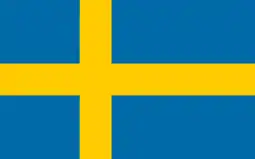 Sweden – Nils-Åke Häggbom (Head of Jury)
Sweden – Nils-Åke Häggbom (Head of Jury) Sweden – Birgit Cullberg
Sweden – Birgit Cullberg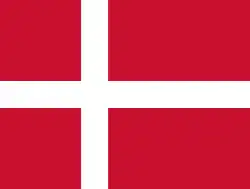 Denmark – Frank Andersen
Denmark – Frank Andersen Romania/
Romania/ France – Gigi Gheorghe Caciuleanu
France – Gigi Gheorghe Caciuleanu Italy – Paolo Bortoluzzi
Italy – Paolo Bortoluzzi Germany – Peter Van Dyk
Germany – Peter Van Dyk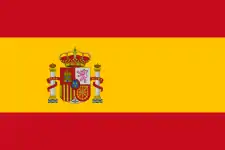 Spain – María de Ávila
Spain – María de Ávila.svg.png.webp) Switzerland – Heinz Spoerli
Switzerland – Heinz Spoerli.svg.png.webp) Belgium – Micha Van Hoecke
Belgium – Micha Van Hoecke France – Pierre Lacotte
France – Pierre Lacotte Sweden – Elsa-Marianne von Rosen
Sweden – Elsa-Marianne von Rosen Italy – Elisabetta Terabust
Italy – Elisabetta Terabust Finland – Jorma Uotinen
Finland – Jorma Uotinen
Broadcasting
The 1993 Young Dancers competition was broadcast in at least 15 countries.
| Country | Broadcaster(s) |
|---|---|
| ORF | |
| RTBF | |
| CyBC | |
| DR | |
| ERR | |
| Yle | |
| France 3 | |
| ZDF | |
| ERT | |
| NRK | |
| TVP | |
| RTVSLO | |
| TVE | |
| SVT1 | |
| SRG SSR | |
See also
References
- ↑ Yugoslavia did not exist as such since 1992
- 1 2 3 4 5 6 7 "Eurovision Young Dancers 1993: About the show". European Broadcasting Union. Retrieved 5 October 2014.
- 1 2 "Eurovision Young Dancers 1993: Participants". youngmusicians.tv. European Broadcasting Union. Retrieved 5 October 2014.
- 1 2 "Eurovision Young Dancers - Format". youngdancers.tv. European Broadcasting Union. Archived from the original on 11 February 2015. Retrieved 8 March 2015.
